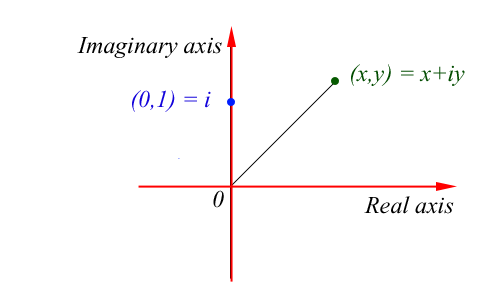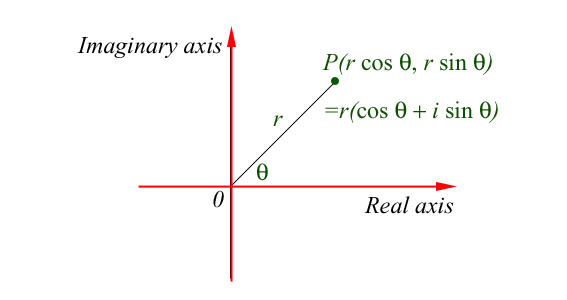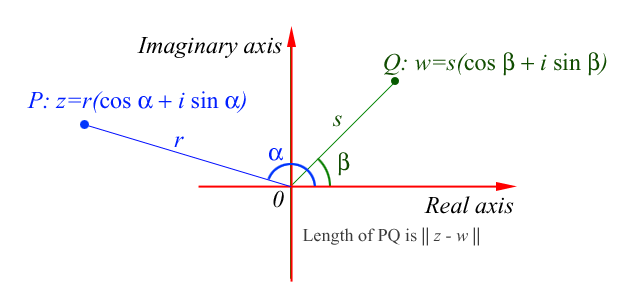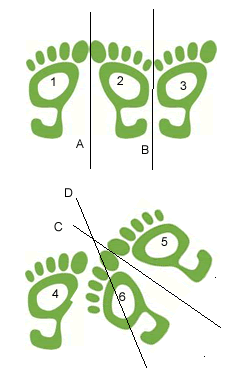Or search by topic
Number and algebra
Geometry and measure
Probability and statistics
Working mathematically
Advanced mathematics
For younger learners
Published 2004 Revised 2011
What Are Complex Numbers?
The Argand Diagram
In introducing complex numbers, and the notation for them, this article brings together into one bigger 'picture' some closely related elementary ideas like vectors and the exponential and trigonometric functions and their derivatives.

The Arithmetic of Complex Numbers
Complex Numbers as Vectors
Complex Numbers and Solutions of Polynomial Equations
The Modulus and Argument of a Complex Number


Complex Numbers and Transformations in The Plane
 |
Functions of a complex variable provide an efficient way to work mathematically with transformations in the plane.
Isometries are transformations that preserve angles and distances. Reflections, translations, rotations and glide reflections are isometries. All the isometries are combinations of reflections. For an introduction to this idea see Mirror Mirror and . ..on The Wall.
To follow up the idea that all the isometries are combinations of reflections, and to see how functions of a complex variable are used to work with transformations, see Footprints.
|
Some of the History of Complex Numbers
Historically these numbers were thought of simply as mathematical tools useful in solving equations and called imaginary numbers . We call $x$ the real part and $y$ the imaginary part of the complex number and these terms were introduced by Descartes (1596 - 1650) whose
name gave rise to the term Cartesian coordinates. These so-called 'numbers' were treated with much suspicion by mathematicians for around another 200 years or so. Wallis (1616 - 1703) realised that real numbers could be represented on a line and made an early attempt to represent complex numbers as points in the plane. Then Wessel (1797), Gauss (1800) and Argand (1806) all successfully
represented complex numbers as points in the plane. Gauss introduced the name complex numbers in 1832. In the nineteenth century Cauchy, Riemann and other mathematicians incorporated complex numbers into analysis thus extending the analysis of real numbers and giving complex numbers equal status.
The most important mathematical constants in one formula
We shall now explain the result $$\cos \theta + i\sin \theta = e^{i\theta} = \exp(i\theta)$$ proved by Euler in 1748, which leads to the very striking formula $$e^{i\pi} = -1.$$
We assume that the reader is familiar with the fact that the derivative of $\sin \theta$ with respect to $\theta$ is $\cos \theta$ and the derivative of $\cos \theta$ is $-\sin \theta$. Hence the derivative of $\cos \theta + i\sin \theta$ is $$-\sin \theta + i\cos \theta = i(\cos \theta + i \sin \theta)$$ so that $f(\theta)= \cos \theta + i \sin \theta$ satisfies the differential equation
$${\mathrm{d}f(\theta) \over \mathrm{d\theta}} = {i}f(\theta).\quad (1)$$ The exponential function is the function $g(x) = \exp(x)$ which satisfies the differential equation $${\mathrm{d}g(x)\over \mathrm{dx}} = g(x).$$ It follows that if $g(\theta) = \exp(i\theta)$ then $${dg(\theta) \over \mathrm{d\theta}} = i g(\theta).\quad (2)$$ but this is exactly the same differential equation as equation
(1) so the functions $f$ and $g$ can only differ by a constant as they have the same derivative. Putting $\theta = 0$ we see that $f(0)=g(0)=1$ so these two functions must in fact be identical. This proves that $\cos \theta + i \sin \theta = \exp(i\theta)$. Then putting $\theta$ equal to $\pi$ we have $\cos \pi = -1$ and $\sin \pi = 0$, thus $$e^{i\pi} = -1.$$ This proof uses differential
equations and it is not just an exercise in solving them.
You may also like
Roots and Coefficients
If xyz = 1 and x+y+z =1/x + 1/y + 1/z show that at least one of these numbers must be 1. Now for the complexity! When are the other numbers real and when are they complex?
Target Six
Show that x = 1 is a solution of the equation x^(3/2) - 8x^(-3/2) = 7 and find all other solutions.
8 Methods for Three by One
This problem in geometry has been solved in no less than EIGHT ways by a pair of students. How would you solve it? How many of their solutions can you follow? How are they the same or different? Which do you like best?

